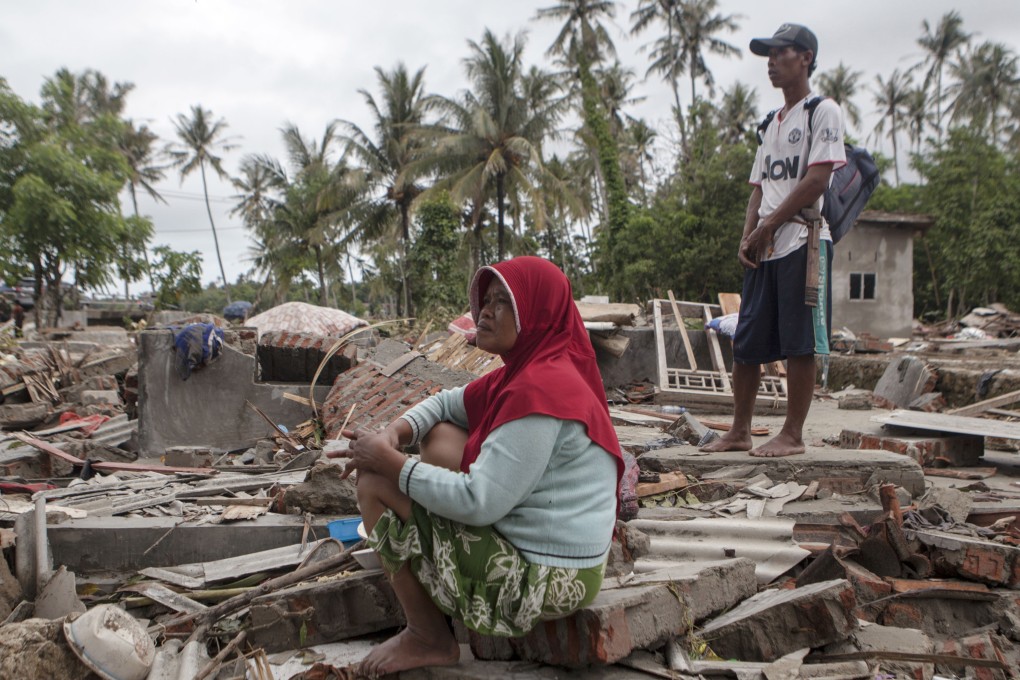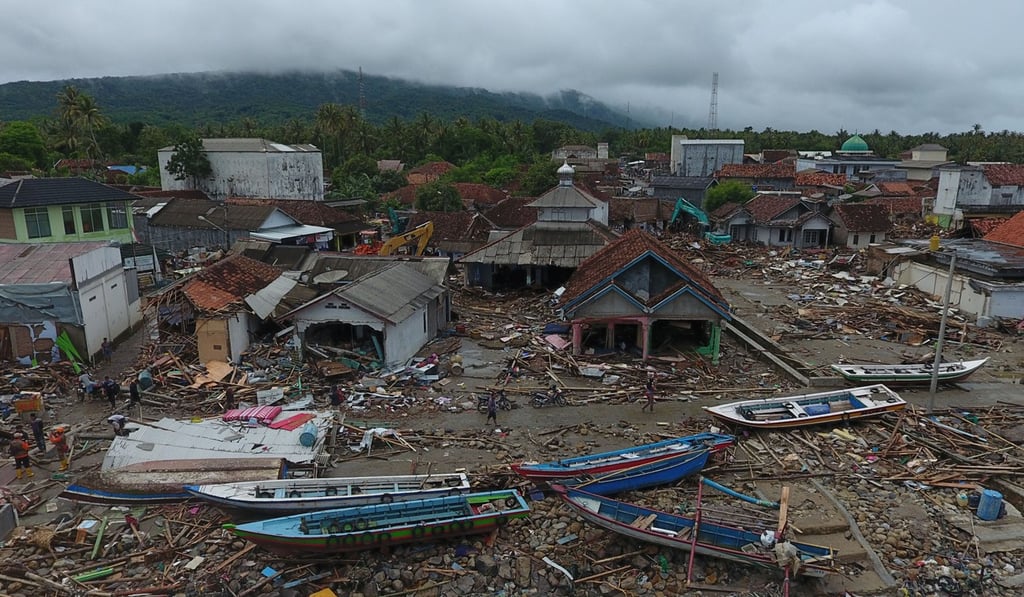Advertisement
Selfie-seeking Indonesians travel to tsunami devastated zone ‘to share grief’ and ‘get more likes’
- Banten province was hit by the deadly waves on Saturday night, leaving hundreds dead and many still missing
- Since then it has been visited by a stream of people who have come from far away to share online photos of themselves at the site of the destruction
Reading Time:2 minutes
Why you can trust SCMP

Solihat and her three friends had everything sorted for their perfect selfie, ready to be taken by the beach in Indonesia’s Banten province.
Their hijabs were striking: one pink, one green. One of the gang was ready with a ‘V’ finger peace sign. And most importantly, in the background was a scene of utter carnage: a flooded field scattered with cars and farm equipment smashed up by the tsunami that devastated the province’s coast on Saturday night, killing almost 500 people.
The field, full of floating detritus and overlooking the choppy waves of the Sunda Strait, is now a graveyard for farm vehicles previously stored in a huge barn, that were swept away by the deadly waves.
Advertisement

Since then it has been visited by a stream of Indonesian selfie-seekers, many travelling for hours to share online photos of themselves at the site of the tsunami, which was caused by land shifting on the nearby volcano Anak Krakatoa.
Advertisement
Advertisement
Select Voice
Choose your listening speed
Get through articles 2x faster
1.25x
250 WPM
Slow
Average
Fast
1.25x